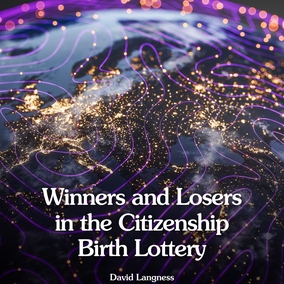The views expressed in our content reflect individual perspectives and do not represent the authoritative views of the Baha'i Faith.
When Aquinas developed his “Five Ways” of proving God exists, many people believed that he had conclusively proven the existence of a Creator; while others argued that his five proofs were circular and proved nothing.

St. Thomas Aquinas
But Aquinas’ thinking and writing laid the groundwork for a great deal of modern philosophy. Whether conceived in agreement or disagreement with his concepts, his work had enormous influence in the fields of political theory, metaphysics, ethics and theology.
The most famous Aquinas proof of God – the idea of cause and effect — still persists, a thousand years after he made the argument. Of course, Aquinas didn’t invent it — Plato and Aristotle did – but most thinkers and philosophers credit Aquinas for stating it so economically and so well. In the simplest terms, it follows this logic path:
1. Every finite and contingent being has a cause.
2. Nothing finite and contingent can cause itself.
3. A causal chain cannot be of infinite length.
4. Therefore, a First Cause (or something that is not an effect) must exist.
If you think about the ancient Greeks, who understood this coherent concept long before scientists began to comprehend the Universe the way we do now, the argument is even more impressive. Now accepted by many, science calls this cause-and-effect theory “the Big Bang” when applied to the creation of the universe. The scientific version goes like this:
1. Whatever begins to exist has a cause.
2. The Universe began to exist.
3. Therefore, the Universe had a cause.
That logic underpins much of our current scientific understanding. Of course, no one can yet prove that the universe had a “First Cause,” even though this theory is by far the most prevalent creation story science has yet discovered.
However – many of the cause-and-effect, Big Bang believers and theorists, who make up the majority of today’s scientists, also see the flaw in this seemingly clear logic – the problem called infinite regression. Infinite regression basically argues that if the universe had a first cause, what caused that first cause? In other words, if cause and effect are always in force, then how could a “first” cause even exist?
The Baha’i teachings address this deep philosophical and scientific conundrum in a new and completely unique way, which some theoretical physicists, string theorists and astrophysicists who study black holes have also begun to postulate. This scientific and spiritual understanding supports cause and effect without the problem of infinite regression intruding. Called the uncreated universe, it melds the idea of cause and effect with a much more understandable concept of the First Cause:
Know of a certainty that every visible thing has a cause. For instance, this table is made by a carpenter; its originator is the carpenter. Therefore as such objects are not self created, they are not in the nature of things eternal; but need an auxiliary-transforming force, although in their essence they are very ancient in time; but their ancient and eternal existence is not due to the temporary form.
For instance, the world of elements cannot be annihilated, because pure existence cannot be annihilated; and what we observe are but transformative modifications in the composition of the essence. The combination of different elements has formed physical man; when the composition is destroyed the elements will return to their component parts. Complete annihilation cannot take place.
The universe has never had a beginning. From the point of view of essence it transforms itself. God is eternal in essence and in time. He is his own existence and cause. This is why the material world is eternal in essence, for the power of God is eternal. – Abdu’l-Baha, Divine Philosophy, pp. 106-107.
Here, and in many other places in the Baha’i teachings, Abdu’l-Baha makes an extremely important argument that combines the most advanced science we now know with a vast and illimitable understanding of God:
Thus, if there was a time when God did not manifest His qualities, then there was no God, because the attributes of God presuppose the creation of phenomena. For example, by present consideration we say that God is the creator. Then there must always have been a creation — since the quality of creator cannot be limited to the moment when some man or men realize this attribute. The attributes that we discover one by one — these attributes themselves necessarily anticipated our discovery of them. Therefore, God has no beginning and no ending; nor is His creation limited ever as to degree. Limitations of time and degree pertain to things created, never to the creation as a whole. – Abdu’l-Baha, Foundations of World Unity, p. 52.
Aristotle and Aquinas have led us to the cutting edge of contemporary science. So let’s take a short detour from the arguments of the ancients for the existence of God, and explore, in the next essay in this ongoing series, what those scientific questions mean for our search.
You May Also Like
Comments

















http://bahai-library.com/hatcher_minimalism_classical_philosophy